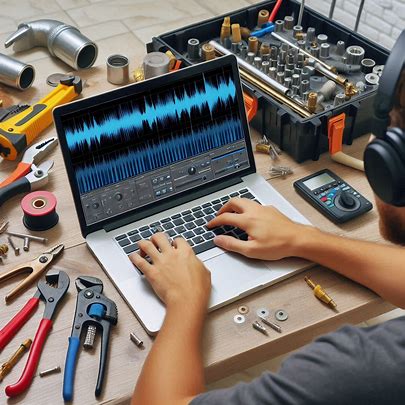The Intersection of Plumbing and Sound Design: Finding Rhythm in the Unexpected
Pipes drip, gurgle, clang, and rush. Often ignored in everyday life, these sounds hold a surprising rhythmic charm. Sound designers and musicians are beginning to tune into these unintentional melodies—using plumbing as a rich source of inspiration.
Across Europe, sound artists and designers have experimented with the echoes of radiators, drainpipes, and leaking faucets. A well-known plumber (plombier liege) once noted that every home has its own “acoustic fingerprint” thanks to how water flows and interacts with its plumbing system. This idea has since sparked creative projects that blend utility with art, pushing boundaries in music, film, and podcast production.
Plumbing as an Accidental Instrument

There’s something oddly musical about the way plumbing behaves. Tapping a heating pipe, the sudden whoosh of a flush, or the subtle echo of water draining down a sink can create patterns that mimic percussion instruments. These are not random noises—they often follow the rules of physics and pressure, creating beats, tones, and sequences that are consistent and repeatable.
Some sound designers record these sounds in their natural environment, then amplify, loop, or distort them to build entire soundscapes. Others recreate plumbing noises in studio settings using metal tubes, water tanks, and valves to control pitch and rhythm. The result? A unique audio texture that’s raw, industrial, and deeply human.
Inspiration for Film and Podcast Soundscapes
For filmmakers, plumbing noises offer an authentic way to bring scenes to life. A horror movie might use the low groan of old pipes to build tension. A comedy might highlight an awkward silence with a squeaky faucet. Podcasts, too, benefit from this approach. Ambient plumbing sounds can add realism or evoke emotion in audio dramas and storytelling episodes.
Sound designers who think outside the box are now creating libraries filled with these utility-based sounds. They understand that even something as dull as a leaking pipe can become a character in itself. It’s not just about recording—it’s about knowing how and when to use these audio textures to support a larger narrative.
From Field Recording to Studio Production
Capturing plumbing sounds starts with attentive listening. Field recordists might spend hours in basements or utility rooms, using high-quality microphones to pick up subtle vibrations and reverberations. They often combine these raw recordings with digital effects like reverb, pitch shifting, and filtering to create something musical.
For example, the rhythmic clank of a boiler might become a drum loop. A dripping faucet could serve as a metronome. When layered and mixed carefully, these elements can form the backbone of an entire track. It’s a practice that marries creativity with curiosity—and shows how even the most ordinary environments can hold hidden potential.
Artists Embracing the Unexpected
Some musicians and experimental composers are going even further by building installations that use real plumbing components as instruments. Metal pipes, water pressure regulators, and valves are turned into interactive art pieces. These installations allow users to create music by controlling the water flow, blurring the line between technician and artist.
One example is a public exhibit where visitors could adjust faucets to change the pitch of dripping water, creating a live sound composition. These projects highlight the musicality embedded in infrastructure and bring awareness to the overlooked sounds around us.
Why It Matters
At its heart, this approach challenges how we define music and where inspiration comes from. Plumbing may never replace traditional instruments, but it adds something unpredictable and real to creative sound design. For those working in sound, paying attention to the unnoticed is a reminder. Sometimes, the most impactful rhythms come from the most unexpected places.
READ ALSO: 5 Creative Ways to Incorporate Music Themes into Your New Build Home Design
Final Thoughts
Stop and listen the next time you hear a faucet drip or a radiator hiss. There’s a rhythm there—a small, unintentional concert happening in the walls of your home. Artists and designers tapping into this unnoticed orchestra are redefining what it means to make music. And in doing so, they’re turning pipes and pressure into powerful storytelling tools.
